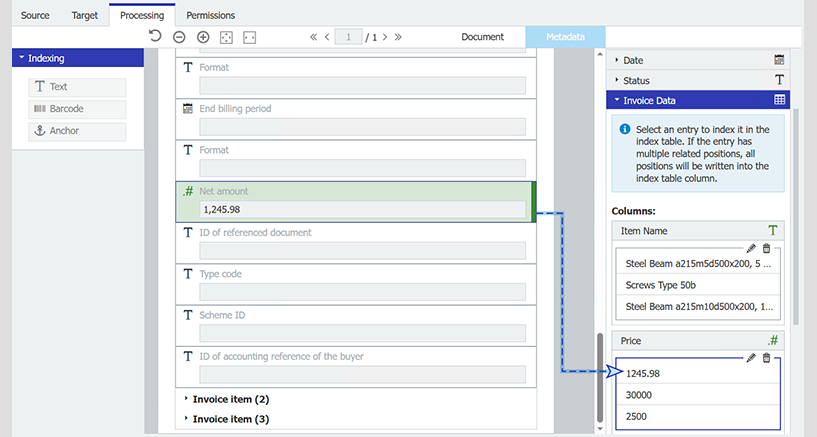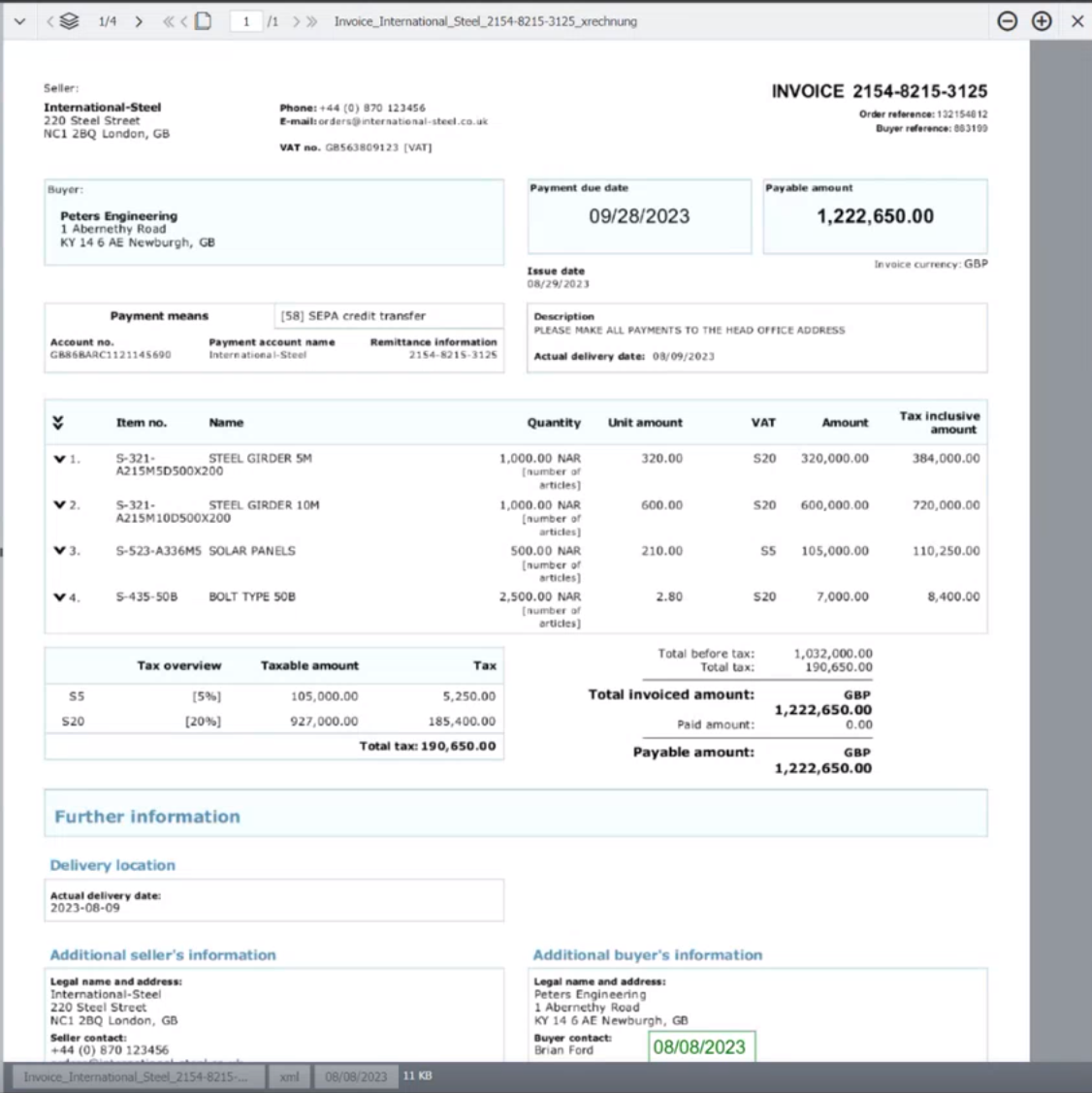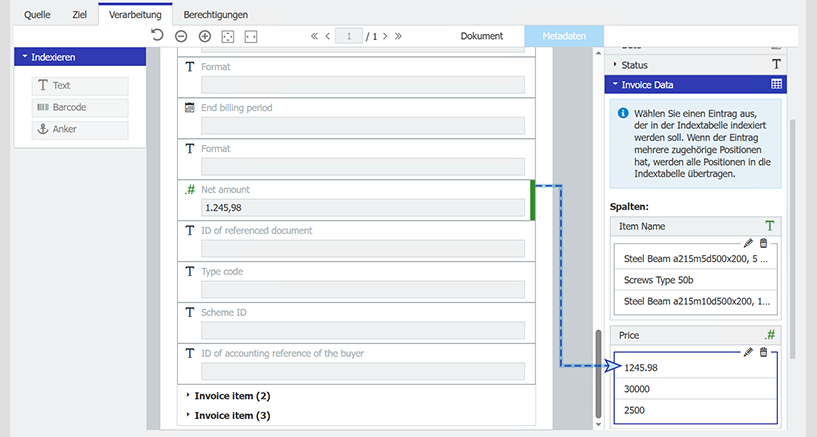Leverage data found in XML invoices to refine your invoice workflow. You can use the line items in index tables to implement detailed releases and quantity reconciliations with delivery slips.
When importing XML invoices, you can now also automatically capture the data of the listed line items and transfer them to index tables.
Contents:
- Fast process with XML invoices
- Capture line items: how to set it up
- What you need to know about XML invoices
- With DocuWare, all types of XML invoices are optimally readable
- DocuWare version 7.9 or later
Fast process with XML invoices
Using line item import has several key advantages:
- Line item data from an invoice is often required for an item-based 2 or 3-way reconciliation (with purchase order and/or delivery note).
- The items can be easily assigned to different cost centers.
- Other parties involved or cost center managers can make detailed approvals.
- For XML invoices, the process can be just as detailed as for paper and PDF invoices, where Intelligent Indexing automatically transfers the line items to the index table
- All information on the invoice is available in DocuWare and is also available for export if required.
Capture line items: how to set it up
Your sample XML calculation must contain at least two items. Simply connect the data of an item to a row in the index table, and all other items in the invoice are automatically transferred to the table.
 You set up the entry of line items in a configuration for document processing under "Indexing".
You set up the entry of line items in a configuration for document processing under "Indexing".
Your XML invoices can be in any of the formats supported by DocuWare (e.g. ZUGFeRD, XRechnung, FatturaPA or FacturX).
What you need to know about XML invoices
XML is a markup language that is used to represent hierarchically structured data in the format of a text file. This file is not only readable by machines, but also by humans. But if you don't have to deal with it on a daily basis, you'll still think it's pure code when you look at an XML file.
DocuWare displays XML invoices conveniently like normal documents, here is an example:

With DocuWare, all types of XML invoices are optimally readable
Background: The European standard for electronic invoicing (EN 16931) regulates the requirements for the XML structure of electronic invoices (e.g. XRechnung, Factur-X). This structure is represented by the syntaxes CII (Cross Industry Invoice) and UBL (Universal Business Language).
In DocuWare, XML invoices that follow the CII syntax are also visualized directly in the language selected in the organization settings. This applies to the language settings German, English, French, Spanish, Polish and Swedish.
For all other organizational languages, the XML invoice is displayed in English. The visual representation of CII invoices thus has the same high quality as for UBL invoices.
DocuWare version 7.9 or later
The described functions are available with DocuWare version 7.9. If you are working with a locally installed DocuWare system, you will need the additional licenses DocuWare Import and Workflow Manager.
Read more about importing documents with DocuWare.

